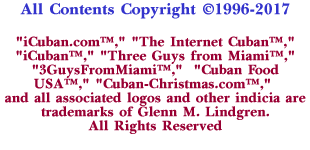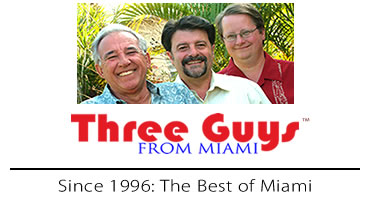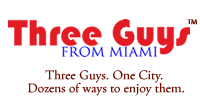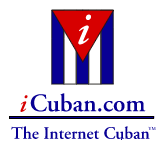Hialeah
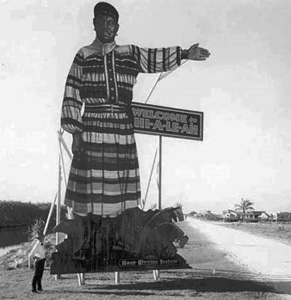
The city surrounding this great horse track is Hialeah, a community that started as a small, sleepy town on the banks of the Miami canal, where barges transported sugar cane from fields near Lake Okeechobee in West Palm Beach to nearby sugar mills.

It wasn't the racetrack, but the end of World War II that began a sea change for bucolic Hialeah. In the late 1940s and early 1950s, Hialeah experienced a housing boom when thousands of returning GIs settled in the city's tiny cinder block sub-divisions. With this steady supply of labor, hundreds of small factories and other enterprises sprung up to make Hialeah the industrial center of not just Miami, but all of south Florida.
Even in this period of growth, Hialeah had acres of open space and a small town feel. Horse ranches along the east side of the Palmetto rented horses by the hour. The McArthur Dairy milkman brought milk, cream and eggs and "tomato boys" went door to door selling freshly picked tomatoes. For years a tiny gas station on the corner of Palm and Okeechobee advertised, "Last chance for gas next 60 miles."
The 1960s brought the most drastic change and Hialeah was never the same. Cubans who had originally settled in the Little Havana neighborhood in Miami grew tired of the small apartments and bungalows and started to look for a place where they could buy a small home with a yard. Since thousands of Cubans worked in the city's shoe factories or clothing manufacturers, Hialeah, with low taxes and inexpensive housing, was a natural choice.


Soon Hialeah became the most Cuban city in the United States, its streets lined with bodegas, fruterías, botánicas, farmacias, and clínicas. Hialeah became the capitol of "exile architecture," as the new arrivals painted the existing homes in warm colors of ochre, mango, and pink. Homeowners placed decorative wrought iron bars on the windows, erected shrines to their favorite saints, and installed a mandatory huge clay pot in the front yard. This pot, the tinajón, is always displayed resting on its side. Backyards filled with mango and papaya trees, while front yards remained treeless to accommodate the large paved driveways needed to park all the family's cars.
Hialeah is a busy town with a constant flow of traffic. Local shops are always full of activity and there is exuberance in the free-style form of capitalism practiced here. The city developed rapidly with planning that was at best haphazard and random, giving the city a free form, unplanned look that is comforting in its unpretentious appeal.
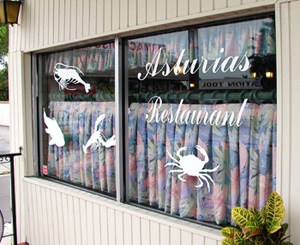
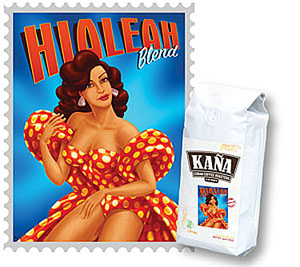
Hialeah residents have a great sense of humor concerning the sometimes ram shackle reputation of their community. The unofficial motto of the city is "Hialeah: Lluvia, fango y factoría"—rain, mud, and factory. Most Hialeans would not have it any other way.
Tony Mendoza & Glenn Lindgren
ATMOSPHERE: Casual
PRICES: Many entrees priced less than $10.
- HOURS: 11:30 a.m. to 10:00 p.m. Tuesday through Sunday
CARDS: Yes
BAR: Beer and wine.
The Details
Asturias Restaurant
Restaurants
Sights
Hialeah Park Racetrack
Las Delicias Restaurant
HOURS: Daily 11:00 a.m. to 10:00 p.m.
PRICES: Low to moderate
ATMOSPHERE: Casual
Chico's is where local politicos come to discuss the affairs of state over lunch. Open 24-7, the restaurant is a dependable destination for honest Cuban food at low prices. This kid-friendly spot serves a great breakfast and the palomilla steaks are fork tender. The restaurant has only closed twice in its history for hurricanes. Although they may board up the windows in a storm, the front door remains open.
Chico's
HOURS: Daily, 24 hours
PRICES: Moderate
ATMOSPHERE: Casual
El Rinconcito De Santa Barbará
PRICES: Moderate
ATMOSPHERE: Casual
HOURS: Daily 11:00 a.m. to 11:30 p.m.
PRICES: Moderate
ATMOSPHERE: Business casual
Molina's Ranch Restaurant
2200 East 4th Avenue
Hialeah, FL 33056
305-885-8000
3930 East 4th Avenue
Hialeah, FL 33013
305-822-4581
4660 West 4th Avenue
Hialeah, FL 33014
305-364-9070
4070 W 12th Avenue
Hialeah, FL 33014
305-556-8907
2050 West 56th Street
Hialeah, FL 33014
305-819-5590
- Molina's Ranch Restaurant
- 4100 East 8th Avenue
- Hialeah, FL 33013
- 305-687-0008
- 4100 East 8th Avenue
Three Guys From Miami Show You How to Make the Best Cuban, Spanish, and Latin American Food!
CHECK OUT THE RECIPES:
Drinks | Appetizers | Salads | Main Dishes
Soups | Side Dishes | Desserts | Index
Visit All of Our Sites:
Three Guys From Miami:
Cuban, Spanish, and Latin American food recipes, Miami/Little Havana Travel Guide, Miami Restaurant Guide, Hispanic Culture & Food
The Three Guys From Miami are: Raúl Musibay, Glenn Lindgren, and Jorge Castillo
Check out The Three Guys From Miami's Google+ Fan Page
